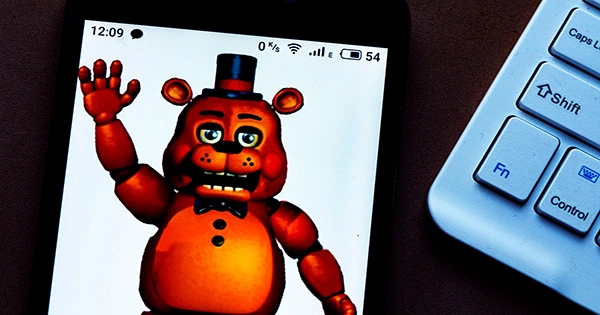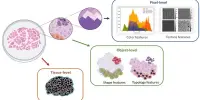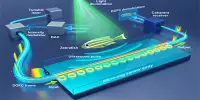Tomorrow, an updated edition of the 2008 survival horror game Fatal Frame: Mask of the Lunar Eclipse will be released for PCs and consoles, bringing with it the game’s first-ever official English translation and an allegedly improved player experience. For lovers of Japanese terror, all those vengeful ghosts with hair hanging long and heavy like seaweed, and Fatal Frame devotees who have been waiting for their white whale to swim by for 15 years, this ought to be an enormous occasion. Although it ought to, I’m not confident that it will. Too much of the game is clumsy.
Mask of the Lunar Eclipse was a work of art restricted to the Wii for the majority of its life. In addition, despite being the fourth installment of the hugely successful Fatal Frame series—the “spooky camera game,” as I’ve been dubbing it—and co-directed by master of horror Goichi Suda, it was only released in Japan.
This impenetrability added an enigmatic thrill to starting the game on my Switch. I was prepared to learn some of 2008’s secrets, which were presented in pixellated Wii visuals like salt and pepper in shakers.
The plot of Mask of the Lunar Eclipse is somber and intricate, much like the wildly popular genre of Japanese horror movies that persisted for at least ten years after 1998’s Ringu. Misaki, Madoka, and Ruka, three amnesic 17-year-olds, arrive at the desolate Rougetsu Island in it. Although detective Chshir Kirishima saved them and two other stolen girls ten years ago, those other girls are now deceased. They were abducted from a sanatorium there. Misaki informs Madoka that they were “carried away”. The survivors return to the sanatorium because they are tormented by the riddle of what happened to them and why.
Welcome to Rougetsu Island
As soon as I step inside Rougetsu, I become aware of the haze. The dusty grain that covers everything in this game helps to conceal some of the flaws of the 15-year-old textures when compared to the more slick character models.
While the game’s updated graphics are certainly more impressive than those of many other recent video game remakes, such as Metroid Prime Remastered, Dead Space, or even Kirby’s Return to Dream Land Deluxe, the game is undoubtedly more colorful (relatively speaking—everything in it is black, gray, or twilight blue).
But I’m not bothered by that. Grain heightens the grim mood of the game. When protagonist Ruka hears a chalky voice crackling through a phone that shouldn’t work, when fragmented memories of a failed ritual resurface in her mind, when the waxen faces of ghosts are swirled and pulled like someone stuck their hand into pond water—all this is enhanced by flea-sized grain, making everything appear to be about to fall apart. It’s like watching disturbing found videos or spending too much time staring at a spectral, black-and-white self-portrait by American artist Francesca Woodman.
The fact that this game is so evil to play does worry me. The protagonists move painfully slowly as if they are just learning how to do it, and their ability to “run” is a slightly faster, bowlegged shuffle, despite being in a haunted house filled with deceased girls.
With my flashlight, I’ll slowly illuminate the shadowy areas around me, revealing shining objects like journal fragments, rather poetic note fragments from the other girls (one worrisome scribble from Madoka says, “Stop shaking me / like / i’m a / toy”), and red and blue crystal upgrade currency you can add to your inventory. You can use the latter to increase your camera’s ability to withstand harm and its usability features, such as its reload time.
My flashlight is good at pointing out these things, but the game’s perspective is less perceptive. I put Ruka in what I think is an ideal grabbing position, directly in front of the item, but the game quickly removes the prompt to pick it up. The blue bar on my HUD, which glows whenever I’m close to something that needs inquiry, appears to be taunting me as this keeps happening.
I eventually locate the camera’s exact preferred pick-up location by moving it around, then I press and hold A to start the arduous process of obtaining an item. Ruka’s slow-grabbing animation is broken when she lets go of A, creating a jagged camera draw. The same is true for any time you enter a door, operate a door handle, or leave a cut scene; you are immediately snapped back into normal gameplay. In particular, because the animations are excruciatingly slow, it makes interacting with the world feel abrupt and out of place. I begin to think that Ruka has overdosed on cough medicine as I read the first chapter.
The game’s controls are just evil ghost dick, so starting a battle demonstrates that she hasn’t.
The potential starts to slip
Without the occult Camera Obscura that pierces with every flash, Mask’s heroes are helpless against the ghosts that encircle them, their eyes black and wide like domino spots. Using the Camera Obscura switches you to first-person while the bulk of the game takes place in third-person with alternating protagonists (I only play as Madoka and Ruka during my playtime).
A red flash at the top of the screen in the Camera’s viewfinder shows the location of a wraith. As your film reloads, a blue circle-shaped meter winds up to show how much harm you’ll cause right away if you take a picture of the spirit. What you really want to do is capture an attacking ghost in a “fatal frame,” a more lethal shot denoted by veiny-looking, blue spikes around that circle-shaped meter. While more harmful film and camera attachments are available, to pick up as items around the sanatorium (if you have the patience for it), what you really want to do is capture an attacking ghost in a fatal frame.
Although the idea is simple enough, the jerky camera and awkwardly moving ghosts—who can clip through walls and materialize behind you, depleting your health the longer they touch you—make the game feel impossible. I scream as I stand in front of Ruka’s enemies, not because I’m so afraid, but rather because I’m a rage quitter—a confession I make with some shame—and I want to stab my Switch with a dagger.
The game’s cosmetic extras, which include a completely out-of-place bikini with a belly dancer theme that you can dress the game’s adolescent protagonists in, don’t particularly amuse me either. Like…what? Do you even need my opinion about how bizarre that is?
It’s strange. I set the game aside because I was upset. With the exception of the themed bikini, a lot about Mask of the Lunar Eclipse reminds me of horror films that gain cult followings made up primarily of women, such as Jennifer’s Body, Raw, and the 1960 French film about beauty and disfigurement, Eyes Without a Face, which I also believe shares a lot of visual and thematic elements with Mask.
However, the virtually unplayable controls and superfluous bikinis give me the impression that it will never actually achieve it.
















